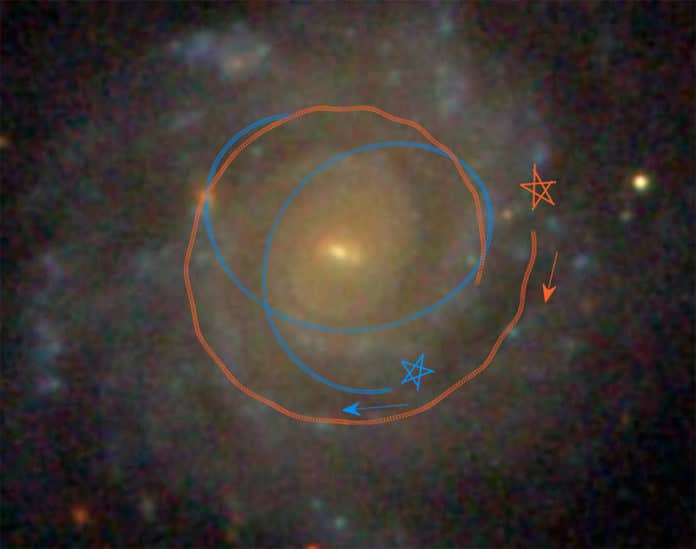Disc galaxies like our own Milky Way, characterized by a flattened disc of stars and gas, have a wide range of masses, spatial extents, and stellar content. Nonetheless, all disc galaxies, both locally and in the distant Universe, share some strikingly similar properties.
Most notable is that the star formation rate correlates tightly with the galaxy’s gas content, the gas motions (the “velocity dispersion”), and the dynamical lifetime (roughly, the time it takes for the galaxy to rotate once).
A new study by the scientists from Iowa State University determined how disk galaxies evolve so smoothly. For this work, scientists focused on advanced studies that they started almost a decade ago. They initially focused on how massive clumps in young galaxies affect star orbits and create galaxy disks featuring bright centers fading to dark edges.
By using realistic models, scientists tracked star scattering within galaxies. The simulations revealed how massive clumps of gas within galaxies scatter some stars from their orbits, eventually creating the smooth, exponential fade in the brightness of many galaxy disks.
Curtis Struck, an Iowa State professor of physics and astronomy, said, “We feel we have a much deeper understanding of the physical processes that resolve this almost-50-year-old key problem.”
Scientists found that the gravitational impulses from the massive clumps of gas alter the orbits of stars. This prompts changes in the star distribution of the disk- leading to new stellar distribution. The exponential brightness profile is a reflection of that new stellar distribution.
Struck said, “The nature of the scattering is far more complex than we previously understood. Despite all this complexity on small scales, it still averages out to the smooth light distribution on large scales.”
“The models also say something about the time it takes for these exponential galaxy disks to form. The types of clumps and initial densities of the disks affect the evolution’s speed, but not the final smoothness in brightness. In this case, speed is a relative term because the timescales for these processes are billions of years.”
The study was conducted in collaboration with the University of Wisconsin-Madison and IBM Research.
Journal Reference:
- Jian Wu et al. Stellar scattering and the formation of exponential discs in self-gravitating systems. DOI: 10.1093/mnras/staa2750
